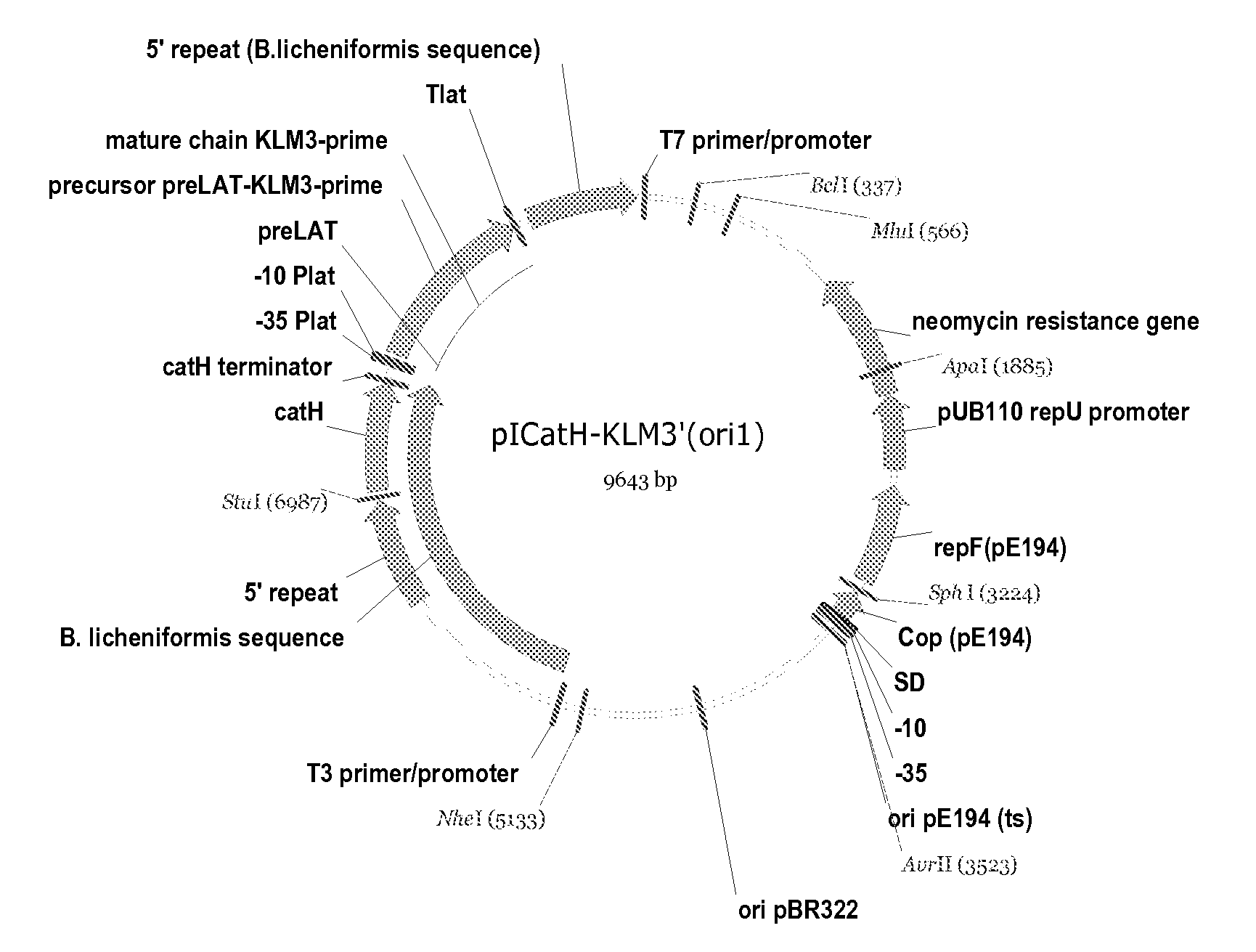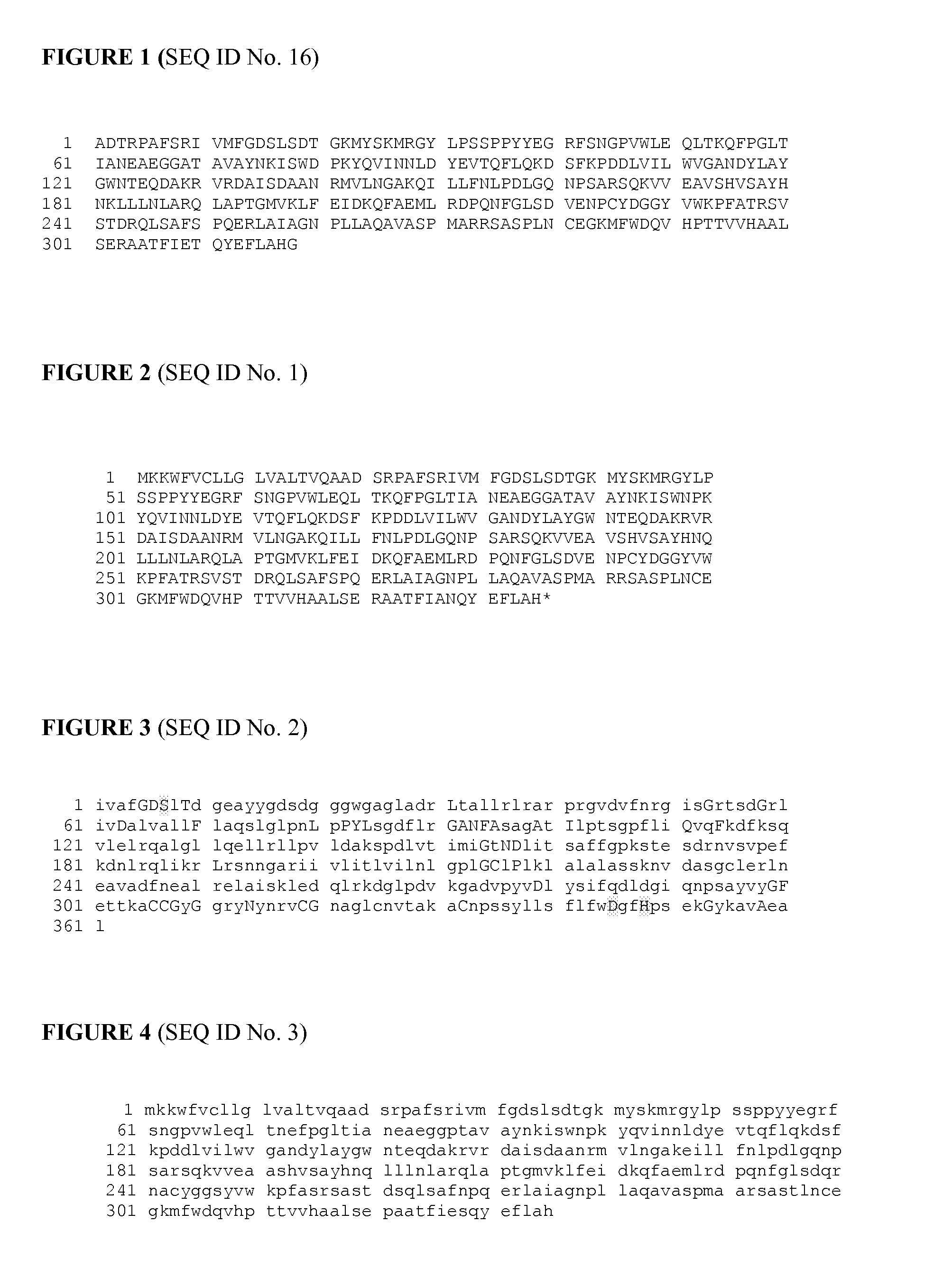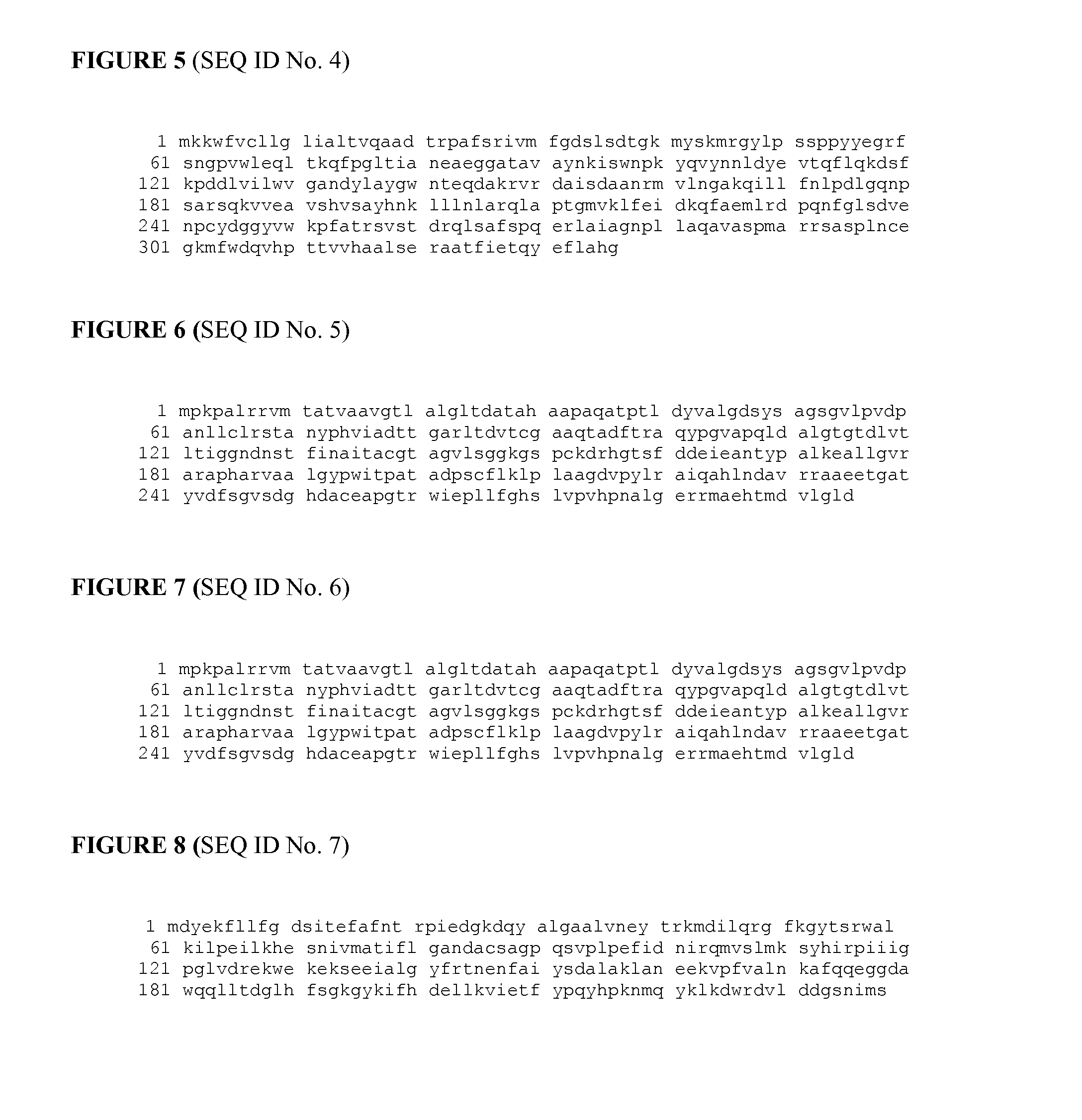Variant polypeptides and methods of making
a polypeptide and variant technology, applied in the field of variant polypeptides and making methods, can solve the problems of low expression of i>b. subtilis /i>, difficult expression of genes in heterologous, and difficulty in expressing lipid acyltransferases in host cells, etc., to achieve enhanced hydrolytic activity and/or transferase activity, enhanced hydrolytic activity, and enhanced transferase activity
- Summary
- Abstract
- Description
- Claims
- Application Information
AI Technical Summary
Benefits of technology
Problems solved by technology
Method used
Image
Examples
example 1
Modelling of Aeromonas hydrophila GDSx Lipase on 1IVN
[0797] The alignment of the Aeromonas hydrophila GDSX lipase amino acid sequence (P10480) to the Escherichia coli Tioesterase amino acid sequence (1IVN) and the Aspergillus aculeatus rhamnogalacturonan acetylesterase amino acid sequence (1DEO) was obtained from the PFAM database in FASTA format. The alignment of P10480 and 1IVN was fed into an automated 3D structure modeller (SWISS-MODELLER server at web pages maintained by Glaxo Wellcome Experimental Research) together with the 1IVN.PDB crystal structure coordinates file FIG. 45). The obtained model for P10480 was structurally aligned to the crystal structures coordinates of 1IVN.PDB and 1DEO.PDB using the ‘Deep View Swiss-PDB viewer’ (obtained at web pages maintained by Glaxo Wellcome Experimental Research) (FIG. 46). The amino acid alignment obtained from the PFAM database (alignment 1—(FIG. 48)) was modified based on the structural alignment of 1DEO.PDB and 1IVN.PDB. This alt...
example 2
Construction of Site Scan Libraries
[0814] The Quick Change Multi Site-Directed Mutagenesis Kit from Stratagene was used according to the manufacturers instruction. For each library a degenerate primer with one NNK or NNS (nucleotide abbreviations) codon was designed. Primer design was performed using the tools available on the Stratagene web site. Primer quality control was further confirmed using standard analysis tools which analyze the primer for the potential of forming hairpins or of forming primer-dimers.
[0815] The main concepts of the method are as follows; using a non-strand displacing high-fidelity DNA polymerase such as Pfu-Turbo and a single primer one will linearly amplify the DNA template. This is in contrast to the normal exponential amplification process of a PCR reaction. This linear amplification process ensures a low error frequency. The product is single stranded non-methylated DNA and double stranded hemi-methylated DNA. If the template is obtained from a suita...
example 3
Selection of Winners From a Site Scan Library
[0816] Two alternative approaches are described; library sequencing followed by analysis of unique amino acids, or library analysis followed by sequencing of the winners.
[0817] Selection of winners method 1; library sequencing followed by analysis of unique amino acids.
[0818] Site scan libraries were constructed using a degenerate oligo containing one NNK codon, where K stands for G or T and N stands for A, C, G, or T. This means that a set of clones constructed from an amplification reaction using an NNK primer (also known as ‘a site scan library’) contains in principle 32 unique codons (4×4×2=32 combination options). Assuming no bias due, the number of clones that one needs to pick to have a 95% chance of picking every one of the 32 codons at least once is 95. This can be calculated using the following formula
n={log(1−c)} / {log(1−f)} Formula 1;
[0819] Where n is the number of clones, c is the fraction value of the confidence interva...
PUM
| Property | Measurement | Unit |
|---|---|---|
| Fraction | aaaaa | aaaaa |
| Fraction | aaaaa | aaaaa |
| Fraction | aaaaa | aaaaa |
Abstract
Description
Claims
Application Information
 Login to View More
Login to View More - R&D
- Intellectual Property
- Life Sciences
- Materials
- Tech Scout
- Unparalleled Data Quality
- Higher Quality Content
- 60% Fewer Hallucinations
Browse by: Latest US Patents, China's latest patents, Technical Efficacy Thesaurus, Application Domain, Technology Topic, Popular Technical Reports.
© 2025 PatSnap. All rights reserved.Legal|Privacy policy|Modern Slavery Act Transparency Statement|Sitemap|About US| Contact US: help@patsnap.com



